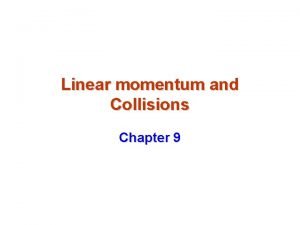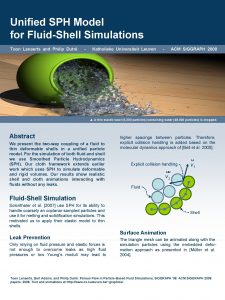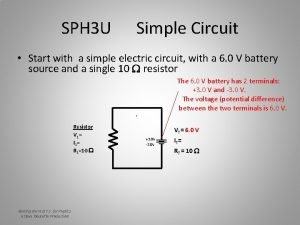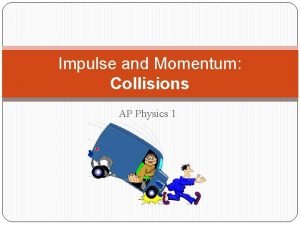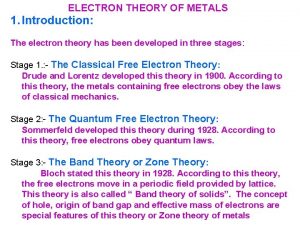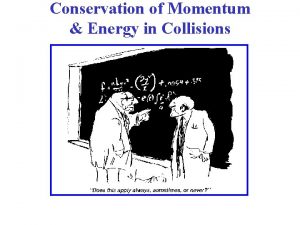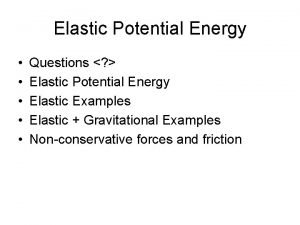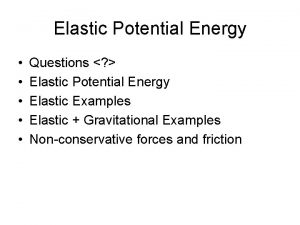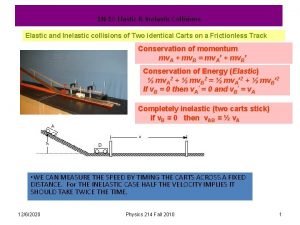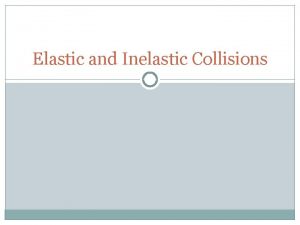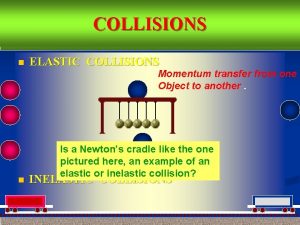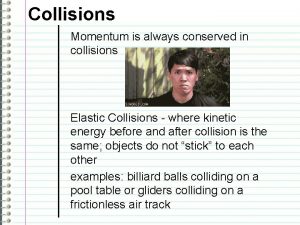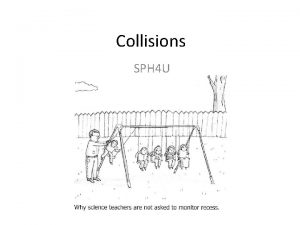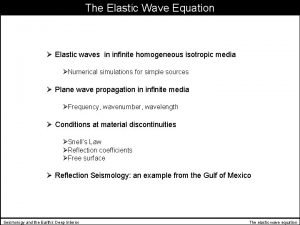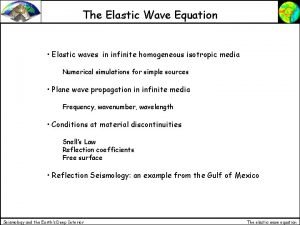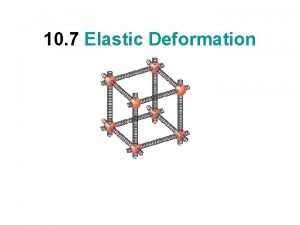Elastic Collisions SPH 4 U Elastic Collisions An


















- Slides: 18

Elastic Collisions SPH 4 U

Elastic Collisions An interaction in which both momentum and kinetic energy are conserved is called an elastic collision.

Elastic Collisions An interaction in which both momentum and kinetic energy are conserved is called an elastic collision.

Elastic Collisions: Example A ball of mass 1 kg with an initial velocity of 10 m/s [E] strikes a stationary ball of mass 1 kg in a completely elastic collision. What is the final velocity of both balls?

Elastic Collisions: Example A ball of mass 1 kg with an initial velocity of 10 m/s [E] strikes a stationary ball of mass 1 kg in a completely elastic collision. What is the final velocity of both balls? First consider conservation of momentum:

Elastic Collisions: Example A ball of mass 1 kg with an initial velocity of 10 m/s [E] strikes a stationary ball of mass 1 kg in a completely elastic collision. What is the final velocity of both balls?

Elastic Collisions: Example A ball of mass 1 kg with an initial velocity of 10 m/s [E] strikes a stationary ball of mass 1 kg in a completely elastic collision. What is the final velocity of both balls?

Elastic Collisions: Example A ball of mass 1 kg with an initial velocity of 10 m/s [E] strikes a stationary ball of mass 1 kg in a completely elastic collision. What is the final velocity of both balls?

Elastic Collisions: Example A ball of mass 1 kg with an initial velocity of 10 m/s [E] strikes a stationary ball of mass 1 kg in a completely elastic collision. What is the final velocity of both balls? Now consider conservation of kinetic energy:

Elastic Collisions: Example

Elastic Collisions: Example

Elastic Collisions: Example

Elastic Collisions: Example

Elastic Collisions: Example This equation has two solutions:

Elastic Collisions: Example Let’s interpret these solutions. .

Elastic Collisions: Example Let’s interpret these solutions. . The second describes a situation in which the first ball passes completely through the second without affecting it. This is not physically possible.

Elastic Collisions: Example Let’s interpret these solutions. . The first describes a situation in which the first ball stops and the second carries away all the momentum and kinetic energy. This is physically possible.

More Practice “Mini-Build Project: Newton’s Cradle” “More Practice with Elastic Collisions”
 Elastic collisions
Elastic collisions Elastic collision vs inelastic
Elastic collision vs inelastic Elastic vs inelastic collision
Elastic vs inelastic collision Hyaline cartilage
Hyaline cartilage Ohsu sph
Ohsu sph Hsao mwd
Hsao mwd Sph toons
Sph toons Sph 4 inches
Sph 4 inches Netgear sph
Netgear sph Sph surface tension
Sph surface tension Sph +3
Sph +3 Sph cah toa
Sph cah toa Units of impulse
Units of impulse The motion of electrons between two successive collisions
The motion of electrons between two successive collisions Elastic potential energy real world examples
Elastic potential energy real world examples Elastic collision video
Elastic collision video Perfectly inelastic collision definition
Perfectly inelastic collision definition Collisions
Collisions Collisions
Collisions


